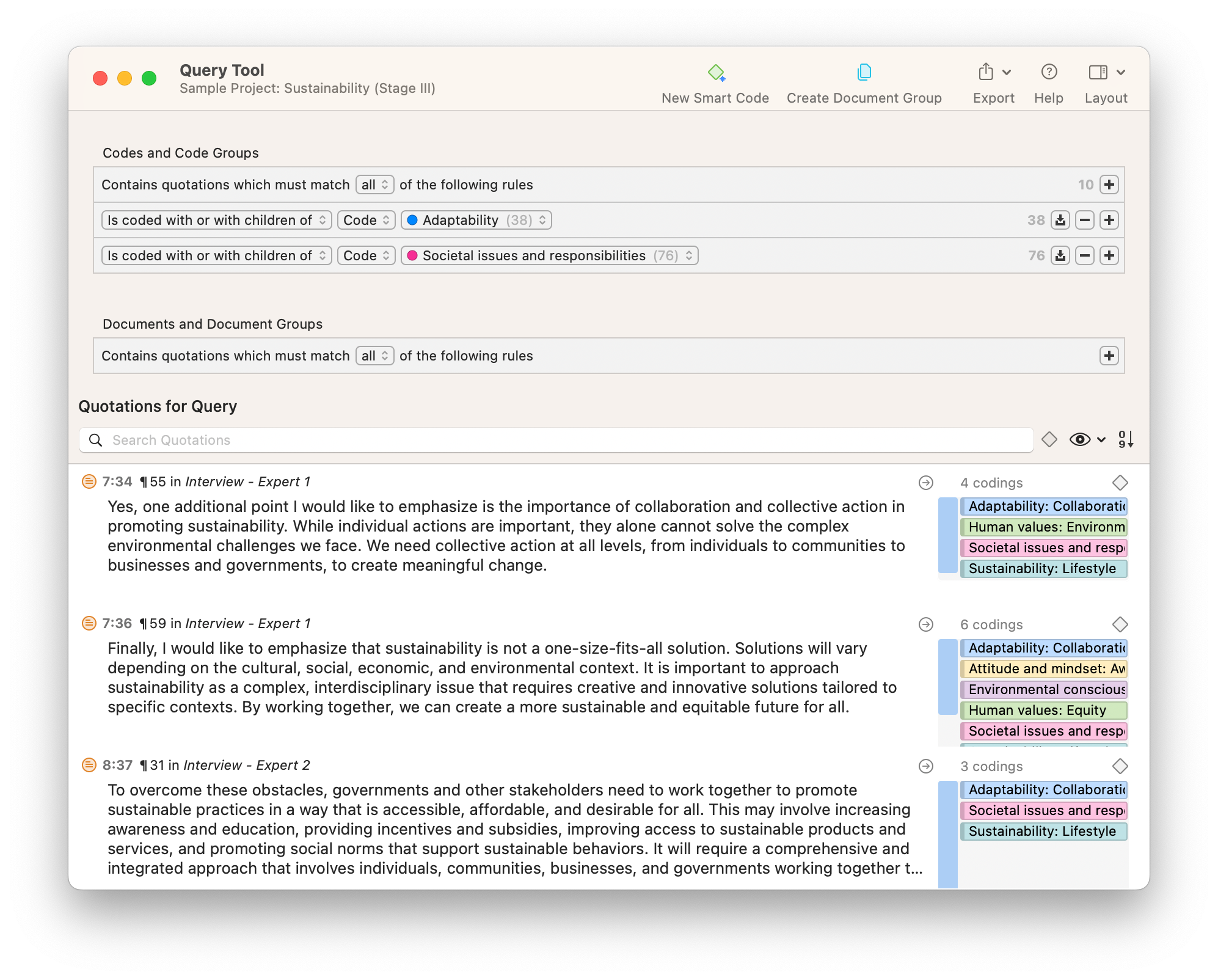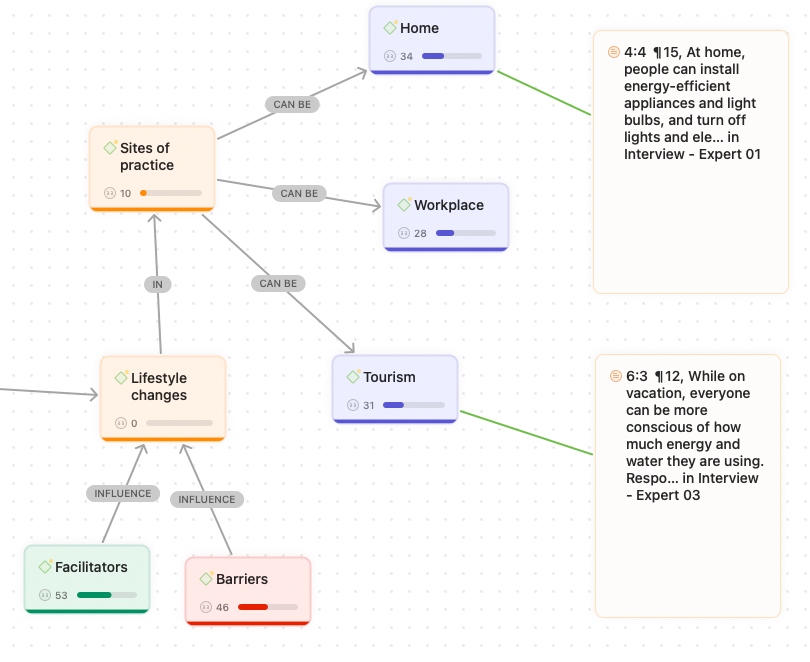How to Write the Results/Findings Section in Research Papers
- Introduction
- What is the results section of a research paper?
- What's the difference between the results section and the discussion section?
- What's the difference between results and findings?
- How do you report research findings?
- Strategies for writing the findings section
Introduction
The results section of a research paper is where the research audience learns the outcomes of a study and it lays the groundwork for establishing the research's contribution to scientific knowledge. The challenge in qualitative research, however, is comprehensively yet concisely presenting the specific aspects of key findings. When the salient points of your qualitative data analysis cannot be easily reduced to tables and figures alone, how do you present the main findings in a way that persuades your research audience?
This article provides a comprehensive explanation of what constitutes a results or findings section in a paper to offer guidance for those who may be inexperienced writing research papers. This article outlines the place of a findings section in a research paper, and the different strategies employed when writing a findings section to reduce complex information down to a concise overview of a research study.

What is the results section of a research paper?
Most research papers follow a logical sequence to report on the various aspects of a study, from the introduction section to the discussion. This sequence outlines the research problem underpinning the study itself, then the methods employed and data collected, followed by a description of the analysis or organization of that data into a meaningful form that addresses the study's research questions.
From this description, the researcher presents the findings or results of this data analysis. The findings section illustrates and explains the key details or insights that the researcher identifies from the study. It is these findings that form the basis of the discussion that details the main takeaways of the research.
In other words, while other sections of a particular paper discuss the study's theoretical developments and contributions to scientific knowledge, the findings section lays out the evidentiary warrants that support those developments. Without this evidence, a research paper runs the risk of presenting unsupported opinions about theory and research.
What's the difference between the results section and the discussion section?
The results section should show the key findings that you have identified from your data analysis, while the discussion section highlights how those findings address the research questions in your study. The discussion section is where the key theoretical developments and potential applications to real-world practice are proposed, but the findings provide the evidence that supports the proposals in the research paper.
In this sense, the presentation of your findings should focus primarily, if not exclusively, on what the data means based on the analysis you use to interpret the data. The implications of such data are best left to the discussion section.
What's the difference between results and findings?
As you collect articles for your literature review, you might notice that some papers have a results section while others have a findings section. In broad terms, there is no major difference as both sections typically follow the methods section of a research paper. Essentially, results or findings are what come as a result of analyzing raw data generated from the study in order to answer a research question.
However, the use of one term over another is sometimes field-specific or method-specific. Research results often come from experimental or quantitative data, both of which come with expectations of objective predictability. Such results are presented in tables and figures and then interpreted by the authors in prose to set up the argument for the significance of the research.
Research findings, on the other hand, are associated with phenomena that are observed. In naturalistic inquiry, research methods such as ethnography and document analysis seldom, if ever, produce predictable and ordered results. Rather, they sample what is found in the real world and provide the basis for a report on what occurred in a given research setting.
Imagine a simple experiment where one plant is given water while a similar plant is given fertilizer and water. The results would describe the differences in the rate of growth between these two plants in a manner that guides recommendations about how to grow plants. With rare or unforeseen exceptions, these results are meant to be predictable and suggest a logical sequence that leads to successful plant growth.
In contrast, think about how an education research project, for example, might collect data through observations and interviews. This data might provide findings about how a teacher can be successful in connecting with their students to promote learning. Note that these findings do not guarantee the same results in other settings, given the situated nature of classroom teaching and learning and the potential differences between teachers and students. They only suggest a potential relationship between what a teacher does and how their students might benefit as a result.
Understanding this difference thus makes it easier to see where you will find a results section and where you will find a findings section. The physical and natural sciences, where you are more likely to find experimental studies and statistical analyses, expect results that are ordered and predictable. Researchers in the social sciences and humanities, where ethnographic research, interviews, and focus groups are more common, will opt for findings over results.
What are key findings?
Those who are skilled writing research papers understand the task of choosing the most relevant results from the raw data while presenting the research in a transparent manner. In research disciplines that rely on qualitative research methods, it's impossible to present all of the data collected from even a single study. When interview transcripts or field notes can run into dozens of pages, writers are faced with the challenge of choosing which segments of data should be represented in a findings section.
These segments of data are meant to explain and support the study's key themes or findings. In data coding and data analysis, a successful researcher has the responsibility of sorting through the data and separating the key findings from the whole body of data.

How do you report research findings?
Reporting research findings in a journal-style scientific paper is a matter of choosing the most relevant results organized in a way that sets up the ensuing discussion. This is a challenge with qualitative data that is unstructured in nature and vast in scope.
When dealing with large amounts of data, along with the word limits found in academic writing, there are a number of accepted practices that qualitative researchers employ to present their findings in a meaningful way.
Codes
Most qualitative studies rely on the coding of raw data. By annotating the data with short but descriptive keywords or key phrases, a researcher can provide structure to the data to identify key themes and patterns relevant to the research question at hand. Presenting these codes in your findings is thus a matter of describing those themes and detailing how the data highlights those themes.
Depending on your research questions, detailing your codebook in a findings section can be a matter of, among other things, showing the most prevalent codes or the patterns of codes as applied to the data. After you have coded your data and grouped codes according to themes, you can conduct a thematic analysis to determine the most prevalent themes to describe the aspects of the concept or phenomenon you're analyzing. Methods such as discourse analysis and narrative analysis also look at the combinations or sequences of codes to generate useful findings. In that case, qualitative data analysis software can help researchers determine the prevalence of such patterns, providing evidence for the assertions about the data collected.
Researchers rely on tables and visualizations such as heat maps and Sankey diagrams to summarize an analysis of codes in a findings section. These figures are often followed by a systematic description of the themes and patterns in the data and what meanings they point out to help address the study's research questions.

Excerpts
Data that comes directly from research participants can oftentimes be more powerful than the researcher's descriptions of that data. If your research paper includes data generated from observations or interviews, then excerpts of that data can prove more persuasive as evidence given its authentic nature. For example, in a presentation of an interview study where researchers are given open access, nursing research and its insights can be made more credible when the perspectives and opinions of nursing practitioners are directly presented to the research audience.
Field notes can also be presented in findings as data that supports the critical insights of the study. Ethnographic research can produce useful observations documented at the time of data collection that can provide a basis for reflection in the findings section. In either case, excerpts of qualitative data in a findings section are often followed by the researcher's descriptions of those excerpts and the rationale for why they serve as useful evidence supporting the study's claims.
Narratives
Anthropological and sociological research often relies on the storytelling aspects of academic writing. It can be a significant challenge to capture an entire culture or social practice in a single segment of data or even a set of separate themes. In such cases, past-tense narratives can convey a holistic sense of the qualitative data to allow readers to immerse themselves in the culture that was observed.
The important point about writing narratives in a paper is that they should describe the salient parts of the data that address the research questions in addition to the context that helps the research audience understand the main findings. When constructing a narrative, it can become easy to lead the audience on a series of tangents that can prove confusing or unhelpful. You can craft a powerful narrative that contributes to scientific knowledge as long as it provides the necessary evidence for your claims while leaving out aspects that can turn out to be irrelevant to your research inquiry.
Figures and tables
To be clear, the findings section in a qualitative research paper cannot easily be reduced to a series of simple data visualizations alone, especially in research fields that depend on narratives to convey the important findings of a study. That said, overlooking the visual elements of a paper, particularly in social science research, can limit opportunities in highlighting evidentiary warrants supporting your claims.
Visualizations include networks, word clouds, heat maps, flowcharts, and Sankey diagrams, among others, all of which can restructure raw data in a form that your research audience can quickly and easily understand. Tables are also included in this discussion as they help to reduce large amounts of qualitative data into compact summaries. Even in social science disciplines that rely heavily on qualitative methods and naturalistic inquiry, statistical analyses and presentations of frequencies can serve a useful purpose in understanding patterns and tendencies. The common thread across all of these visualizations is that they complement the prose or written descriptions of your key findings.

Strategies for writing the findings section
A successful presentation of the main findings should set the stage for an engaging discussion section where readers become convinced of the main takeaways of the research. Where discussion sections are about persuasion, findings provide the necessary evidentiary warrants that ultimately make the arguments in the discussion persuasive.
With this in mind, there are a number of broad strategies to consider when presenting your findings.
Adopt the style of the field
Every research field has their own particular style for highlighting the salient points of a study. Research in economics will focus on statistics, relying on tables and figures to make important assertions about the meaning of the raw data. Cultural anthropology, on the other hand, seldom captures statistical data, opting instead for narratives and artifacts to get at the essence of a culture or community. Other fields have their own unique circumstances that dictate the accepted writing practices among researchers in each discipline.
As a result, you will benefit from reading research similar to the study you want to present, not merely for the findings they highlight but also the style in which they present those findings. Matching the tone and style of similar scholars in your field will resonate with your peer reviewers and eventually your research audience.
Provide the necessary context
Every scientific discipline requires the researcher to describe their research setting, the data or resources they are studying, and the means through which they study them. This task is especially challenging within the social sciences as researchers observe some social phenomenon in some social setting, neither of which is perfectly replicable.
As a result, reporting background information necessary to understanding a segment of data is important to persuading your research audience of the salience and relevance of your findings. Whether you're presenting narratives or packaging qualitative data in excerpts or tables, you will still need to describe the context surrounding your data in prose to make the findings accessible to your research audience.
Establish research transparency
Beginning researchers may make the mistake of only presenting the good points of their findings, ignoring negative results from their own research while overemphasizing data that demonstrates promising trends but may not show the entire picture of the phenomenon being studied. Because of this, readers of research may be skeptical of unsupported claims. By extension, they may also look for all of the potential aspects that influence a concept or phenomenon which might confound or contextualize the claims made in the findings.
Transparency is thus an important part of the research writing process, demanding that researchers qualify their findings with important caveats worth considering. These caveats will often be found in the discussion section, where limitations of the study are outlined. However, describing contextual details in the findings can help your research audience assess the persuasive power of the evidentiary warrants you are using to support your claims.
Write clearly and consistently
Scientific theory, even in the social sciences, often employs specific jargon and technical terms. The background and discussion sections, where theory is the main focus, will often employ field-specific language that may not be accessible to researchers unfamiliar with the field. A compelling findings section, on the other hand, requires the researcher to make the findings easily understood by their research audience.
Oftentimes, this means using clear language that is accessible to readers of research who may not have a specific expertise but general interest in the topic you are studying. As a result, be sure to limit the technical or theoretical language you employ in the findings section to only what is necessary. Doing so can ground the readers in a clear understanding of the data, making for a more engaging discussion section that is more credible with its claims more readily acceptable as scientific knowledge.






